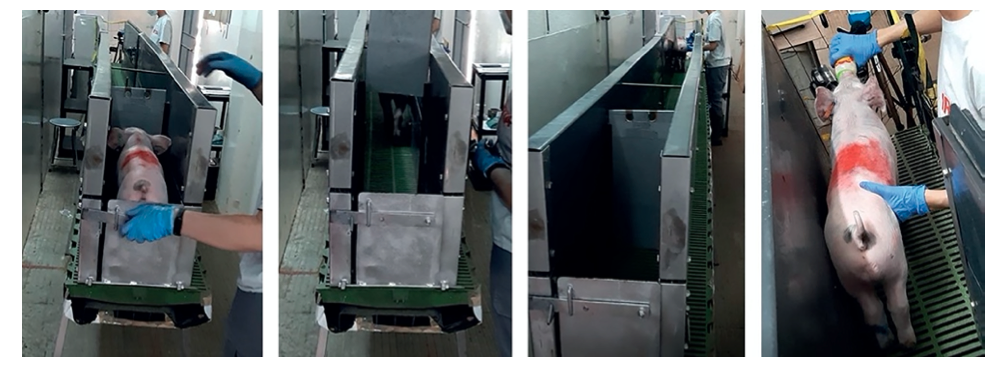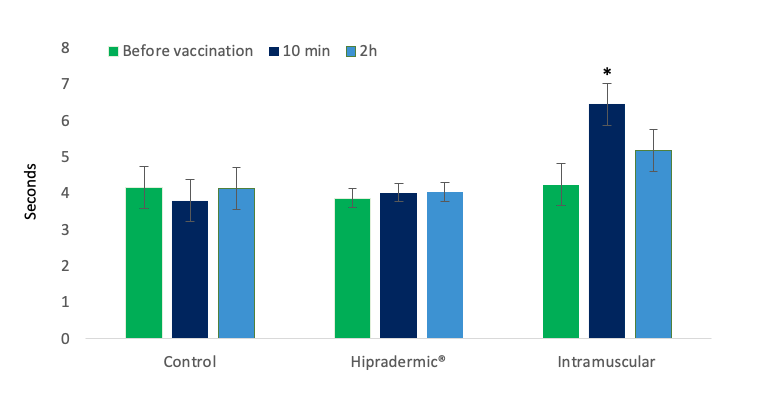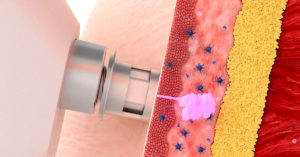Hipradermic® reduces behavioural indicators of pain compared to IM vaccination with a needle and represents an alternative for improvement of animal welfare on swine farms.
Nowadays, society demands high welfare standards for farm animals. Vaccination is crucial for a better health status on farms, but it can represent a stressful event for the animals. Different vaccination approaches could lead to improved animal welfare.
The following study analysed whether the Hipradermic® intradermal needle-free device (ID) improves welfare compared to intramuscular injection with a needle (IM) in piglets.
Material and Methods
Seventy-two PRRS-naïve healthy piglets, 4-weeks-old, were randomly allocated to three groups: ID group (n=24, UNISTRAIN® PRRS 0.2 ml/dose ID), IM group (n=24, UNISTRAIN® PRRS 2 ml/dose IM) and group C (n=24, control group, no vaccination).
An aversion test was carried out by training the piglets to cross a 4 metre raceway (Figure 1) and assessing the time taken for this by all the animals before and 10 minutes, 2h, 24h, 48h and 72h after the vaccination.
In addition, vocalisations at the time of the injection were assessed by means of video and audio recordings, and cortisol analyses were performed on oral fluid. Statistical analysis was carried out using SAS (p-value<0.05).

Figure 1. Piglet crossing the 4 metre raceway.
Results
At the time of the injection, the ID group had a lower incidence of piglets vocalising than the IM group (52% ID vs 88% IM) and the number of high pitch vocalisations (> 1000 Hz) was also lower in ID than IM piglets (0.35 and 1.24 vocalisations/ animal in the ID and IM groups, respectively).
In addition, the dB achieved by the IM group (38% of piglets vocalising at >90 dB) were higher than in the ID group (4% of animals vocalising at >90 dB).
At 10 minutes post-vaccination, the IM group took longer to cross the raceway compared to the ID group and group C and longer than they themselves did prior to the vaccination (Figure 2). No significant difference was observed for salivary cortisol.

Figure 2. Time in seconds taken by the animals to cross the 4 metre raceway before vaccination, 10 minutes after and 2 hours after vaccination.
Hipradermic® reduces behavioural indicators of pain
The increased times taken to cross the raceway and higher vocalisation (presence and power) show that IM injection was more aversive for piglets than being injected intradermally with Hipradermic®.
These behavioural consequences had a low physiological impact if the results of salivary cortisol are considered, the latter also being found in previous studies on commercial farms1,2.
It can be concluded that Hipradermic® reduces behavioural indicators of pain compared to IM vaccination with a needle, and represents an alternative for improvement of animal welfare on swine farms.
References:


